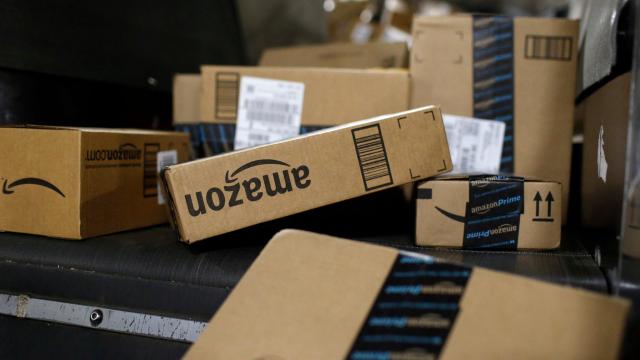Following an episode involving discharged bear repellent at an Amazon warehouse late last year that affected dozens of onsite workers, the company plans to store similarly hazardous products in specialised facilities.
Wired reported Friday that Amazon began developing the facilities prior to the December incident, though the event no doubt illustrates why such spaces are needed. A company spokesperson told Gizmodo by email that these warehouses will be outfitted with special sprinkler systems as well as storage areas for different classifications of product, for example flammable and aerosol items.
Of note, however, is that the new warehouses won’t replace existing systems at other fulfilment centres, and hazmat items of a lower safety classification will still be fulfilled at Amazon’s other facilities, a company spokesperson said.
But products of a high internal safety classification — meaning those deemed to be a greater risk to employees — will be stored at the new facilities, where employees will receive special training for handling such products and other additional safety procedures will be in place. The first of these new warehouses is set to open in Mississippi.
“While we currently store controlled goods in fulfilment centres that are outfitted with these specific storage areas across the country, and many of our fulfillment centres have similar features—such as fire-rated walls and complex sprinkler systems — this facility will have increased training requirements for all employees, different receive and stow restrictions, and a very distinct standard of operational excellence,” an Amazon spokesperson told Gizmodo by email.
Additionally, the spokesperson said that “orders fulfilled in this facility will be transported by ground—not by air.”
During the bear repellent incident at one of its New Jersey fulfilment centres in December — which, notably, was not its first — a can came free of its packaging and discharged, which the company now says may have occurred when it pressed up against safety fencing.
Dozens of employees experienced symptoms ranging from burning eyes and throats to trouble breathing, and 24 employees were transported to the hospital in what the company said at the time was a “precaution.”
Marcy Goldstein-Gelb, co-executive director of the National Council for Occupational Safety and Health, told Gizmodo in a statement at the time that a company like Amazon “that has set the industry standard for world-class logistics can and must do a better job of moving materials without hurting people.”
Since the event, Amazon claims it has “made considerable changes—both in fine-tuning technology to help us track and detect health hazards to our employees, as well as creating manual checks when product is being received or stowed into a building.”
Wired reports the company has since reclassified bear repellent under a higher safety standard for which Amazon’s new facilities are intended.
If Amazon is to be taken at its word, the changes are a step in the right direction. But that doesn’t let it off the hook for all of the other alleged occupational hazards that won it first place on the National Council for Occupational Safety and Health’s annual list of the most dangerous places to work last month — for the second year in a row.
